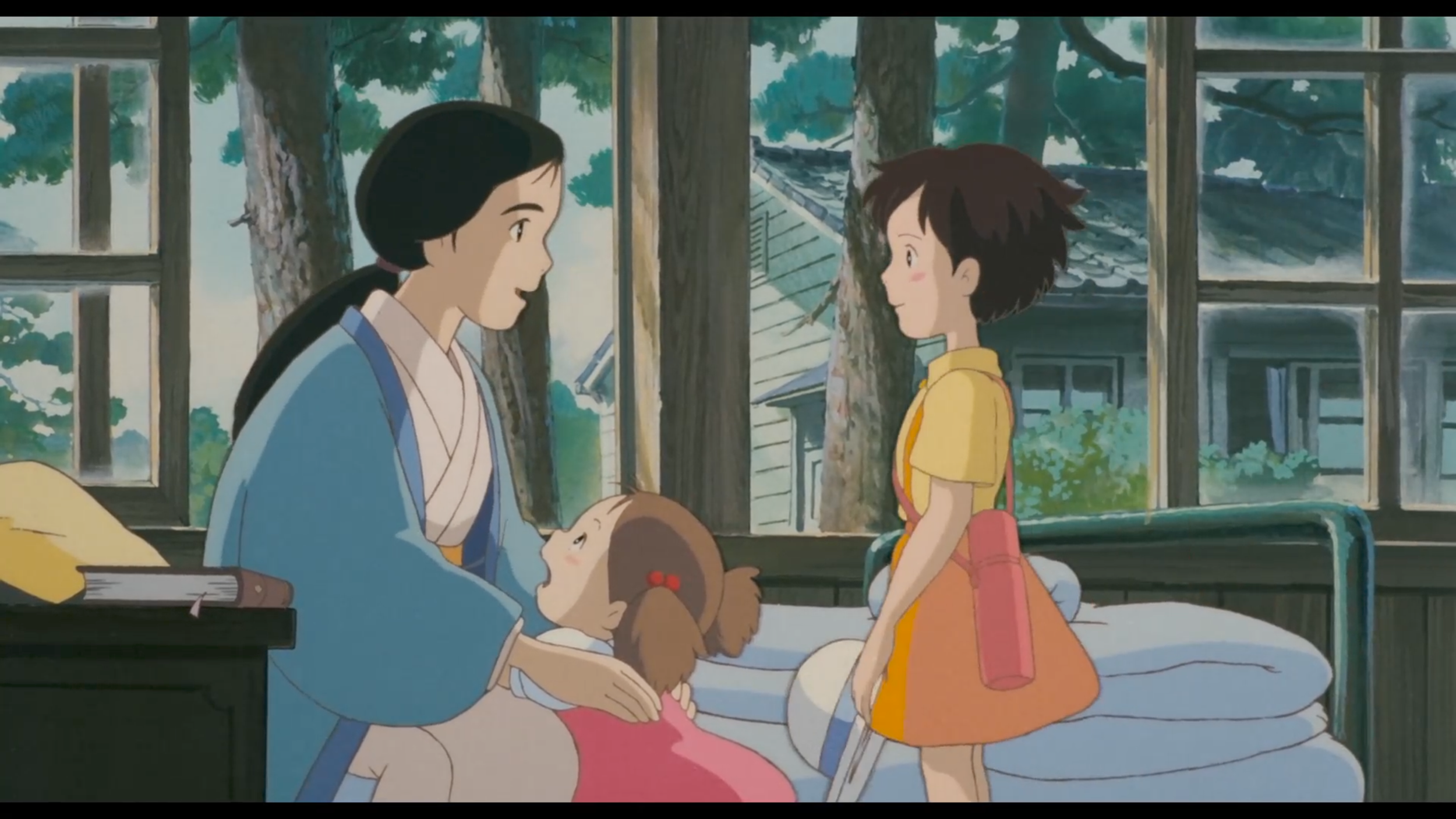My Neighbor Totoro (1988)
When my son was just two years old, “My Neighbor Totoro” became a daily ritual in our home. It was a constant presence that offered comfort during a tender chapter of our lives. My wife often mentions how revisiting this film now triggers vivid memories of that time, watching it over and over with our son while she was pregnant with our daughter. And as I reflect on it, that sense of connection, of a film becoming intertwined with our family’s story, feels perfectly in step with the spirit of this film. It is a work that doesn’t just inhabit the screen but settled into my life.
This unique resonance stems from Hayao Miyazaki’s remarkable ability to craft stories that feel both universal and deeply personal. On its surface, “My Neighbor Totoro” tells a simple tale: two young sisters, Satsuki and Mei, move with their father to a rural home to be closer to their hospitalized mother. It’s a narrative grounded in family dynamics, daily routines, and a quiet undercurrent of worry. But from this ordinary backdrop springs something extraordinary, a celebration of childhood imagination through the arrival of Totoro, the enormous, enigmatic forest spirit who becomes both a protector and a friend. One of Miyazaki’s most profound gifts is the ability to place the fantastical and the everyday side by side, and make them feel as though they belong to the same world.
I find myself struck by its gentle pacing and willingness to linger in the small moments. Modern kids movies rarely allow for such breathing room, instead opting for frenetic energy and constant gags to keep their audience engaged. Miyazaki trusts in the inherent beauty of his scenes, and in his audience’s patience. Nowhere is this more evident than the iconic bus stop scene, where Satsuki and Totoro wait silently in the rain. For nearly 10 minutes, the film holds us in that moment, every drop of rain, every flicker of light contributing to an atmosphere that is at once serene and suspenseful. It is a scene that would be unthinkable in a Disney production, yet it is one of the most cherished moments in all of animation.
The film’s visual brilliance is really what makes me want to come back to it each time. You feel as though you’ve stepped into a living watercolor painting. Miyazaki captures the lush beauty of the Japanese countryside with reverent precision.Every scene feels imbued with warmth and texture, a perfect recreation of not just how a place looks, but how it feels.
Matching the delicacy of the animation is Joe Hisaishi’s masterful score. It is a work of restraint, playful and lighthearted when it needs to be, yet tender and introspective in its quieter moments. The music never overpowers the story or tips into sentimentality. In many ways, the score is a reflection of the film as a whole…understated, heartfelt, and deeply evocative.
What’s remarkable about this film is its ability to transcend traditional “children’s cinema.” So many films aimed at younger audiences are unbearable for adults, treating their viewers as if they need constant noise and antics to remain engaged. Miyazaki creates something far richer, an experience that is just as meaningful for adults as it is for children. And yet, for all its artistry and thematic depth, the movie remains humble. There’s no villain, no epic quest, no moral spoon-fed to us. Instead, it thrives in the small, everyday moments.
It’s no exaggeration to say that “My Neighbor Totoro” is a masterpiece, not just of animation but of cinema as a whole. It is a film that stays with you, not because of its plot or action, but because of the way it makes you feel. For me, it’s a movie as much about memory as it is about magic. It’s also the joy of watching my son laughing his ass off every time he sees the absurdity of the cat bus. If that’s not the true essence of great art, I don’t know what is.


